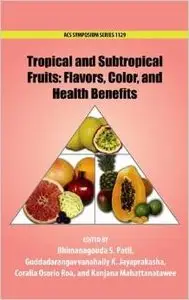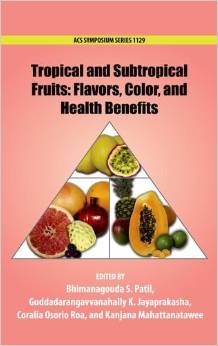Tropical and Subtropical Fruits: Flavors, Color, and Health Benefits by Bhimanagouda S. Patil
English | Sep 23, 2013 | ISBN: 0841228930 | 223 Pages | PDF | 11.6 MB
English | Sep 23, 2013 | ISBN: 0841228930 | 223 Pages | PDF | 11.6 MB
Fruits are one of the most important links in the food chains essential for sustenance of life on the planet Earth and can be classified as tropical or subtropical, depending on where they are cultivated. Asia and the Pacific Rim are the major producing regions, followed by Latin America, the Caribbean, and Africa. Most developing countries have a rich biodiversity, with a significant number of species that are widely consumed among native people but completely unknown in the rest of the world. These fruits exhibit exotic characteristics due to their adaptation to special climatic conditions, this fact make them attractive for new markets.
This book evolved from a symposium, "Tropical and Subtropical Fruits: Flavors, Color, and Health Benefits," held at the 242th annual meeting of the American Chemical Society on August 28-September 1, 2011 at Denver, CO and hosted by the Division of Agricultural & Food Chemistry. Subtropical fruits have been studied for many years; in contrast, the number of publications related to sensory and biofunctional properties of tropical fruits has only recently increased. The first topic examined in this volume is the chemistry of tropical and subtropical fruits, with studies involving isolation of volatile aroma constituents and their identification from citrus, pineapple, and date palm fruits, as well as plant breeding and genetic approaches to improve flavor and nutrients. The second topic examines the effect of climate, salinity and genetic factors on health-promoting and color properties in pomegranates, high hydrostatic pressure processing as a strategy to increase carotenoids of tropical fruits, and preparative separation and pigments from Opuntia ficus-indica by ion-pair high-speed countercurrent chromatography. Finally, the book examines health-promoting properties of citrus volatile constituents, Moringa oleifera, and passion fruit, discusses the antioxidant properties of the anthocyanin-rich fruits annona and citrus and shows the effects of acai berries and walnuts on brain health.



